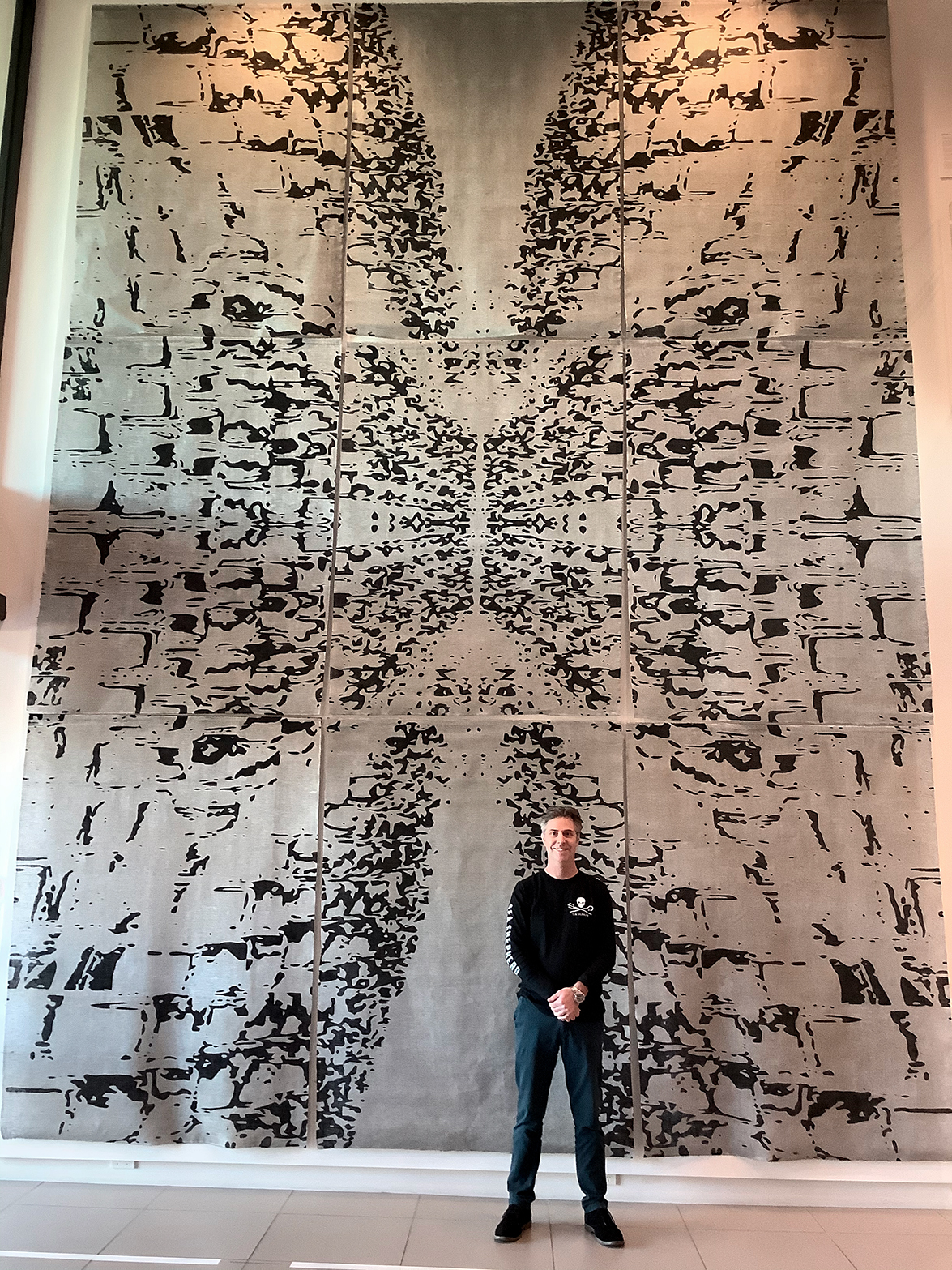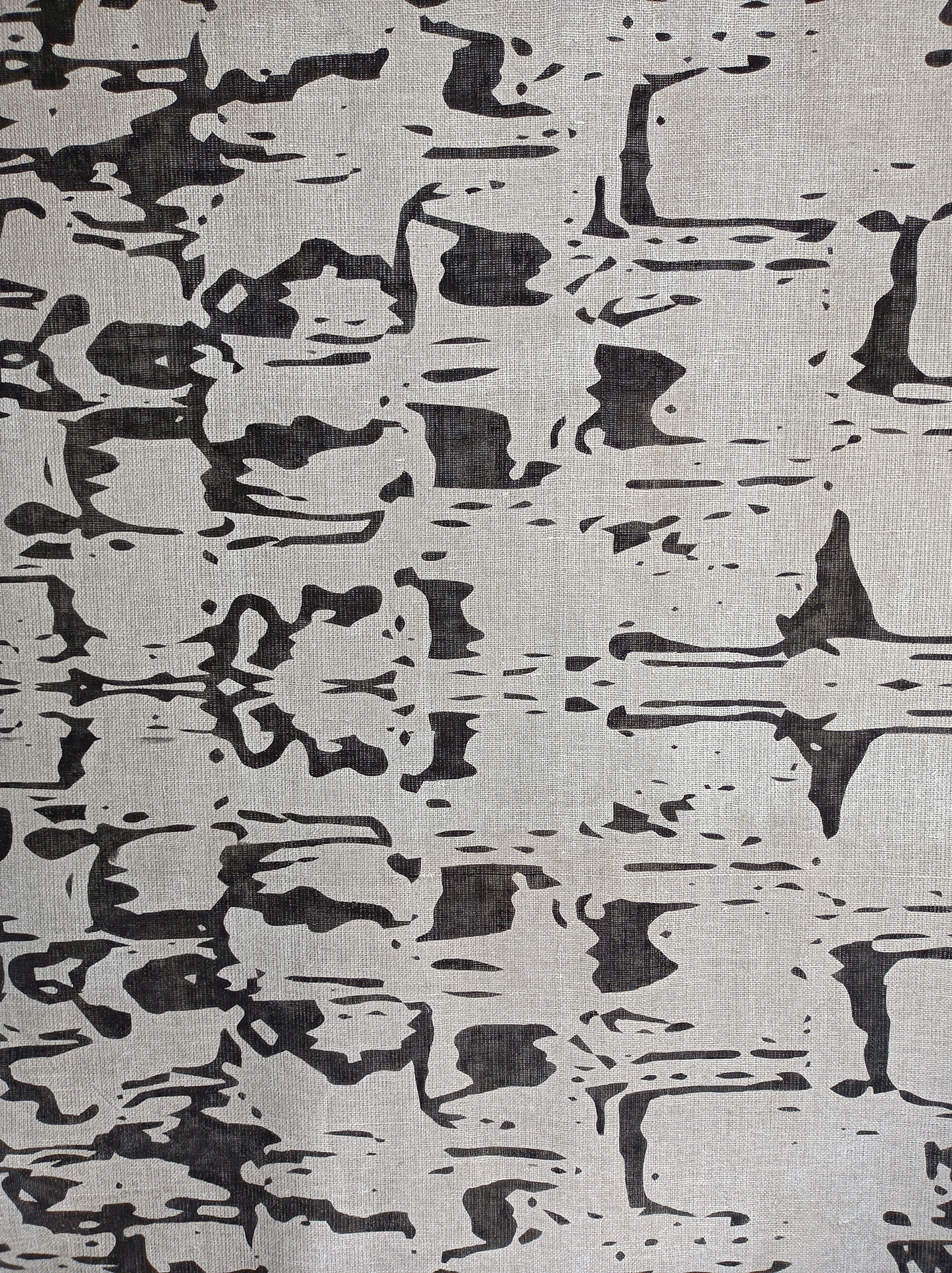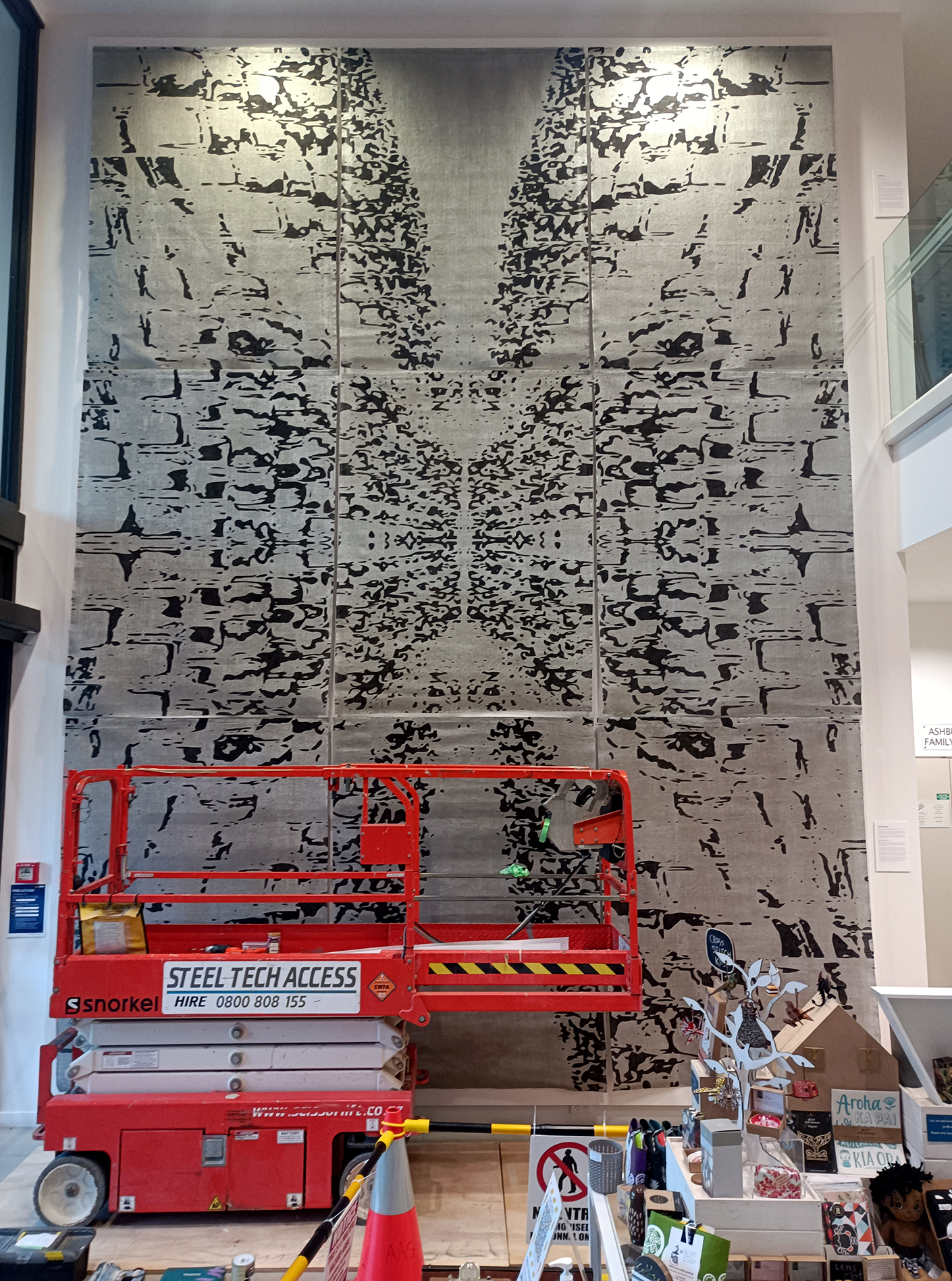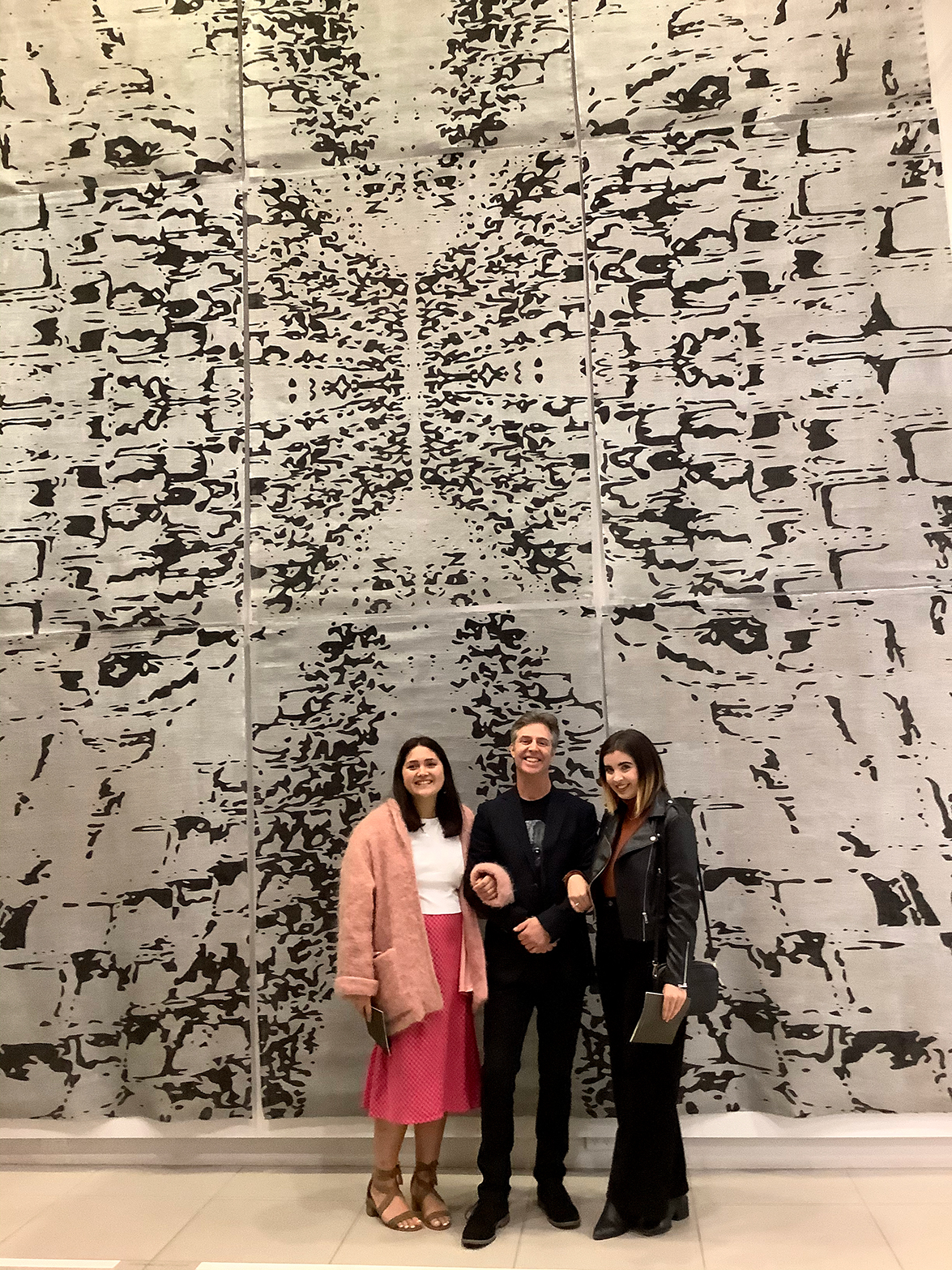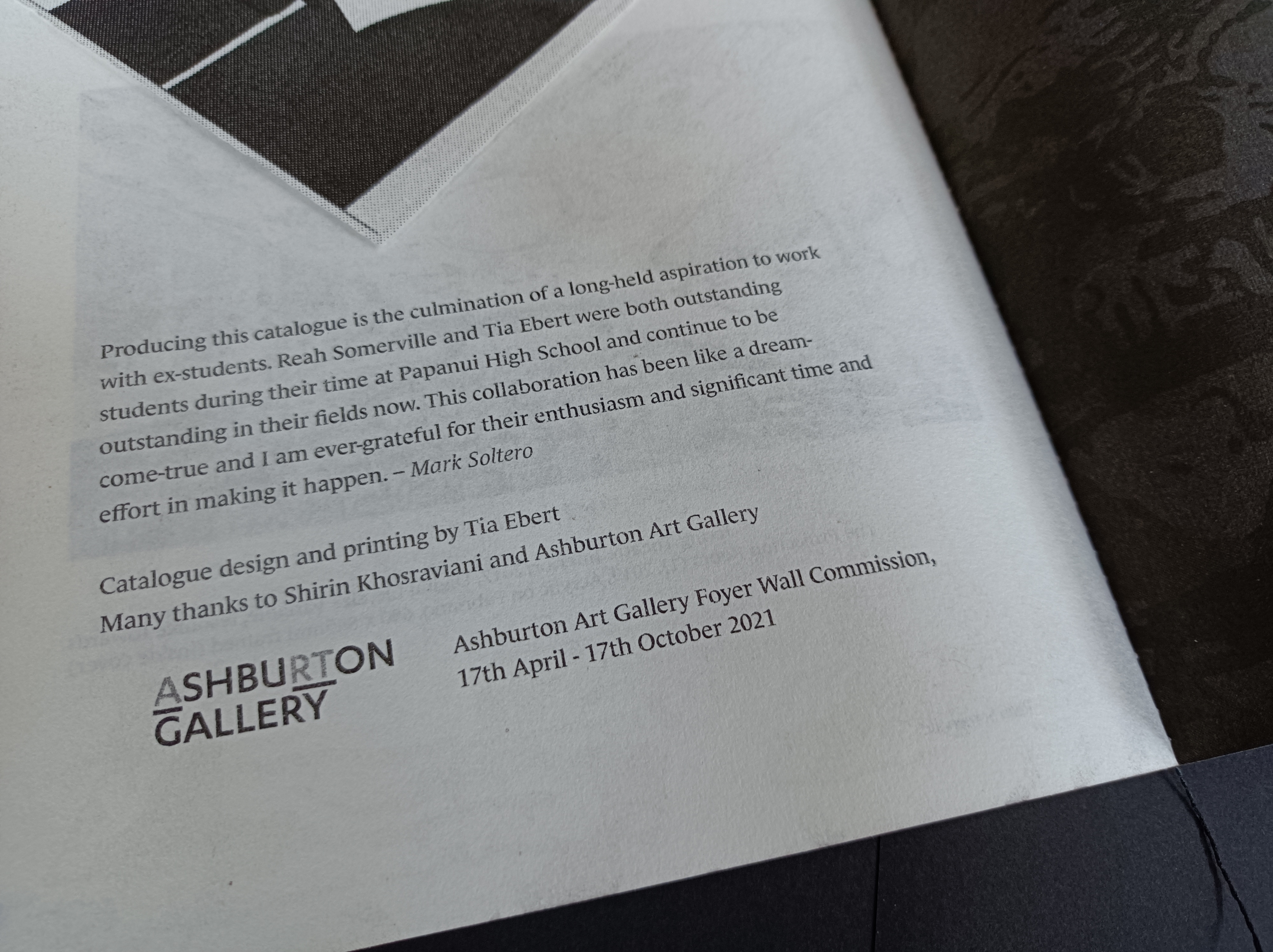Ashburton Art Gallery – Foyer Wall Commission
AAG; April – December, 2021
For Soltero, the theatre is a container for images and collective memory, connecting the physical and theoretical aspects of his work. Soltero’s images begin with the projection of an original photograph created by light reflected from an object. During projection, a passage of light carries the image until striking a surface, creating the second and third copy of the image. What is seen by the viewer is the fourth copy, distanced from the original object by four separations. Soltero’s work reflects these layers, physically and contextually alluding to the ever-growing distance between moment and memory.
Soltero’s works in the Cinématic Ontologies series are built upon a found-image of the interior of Irving Theatre in San Francisco. Using a found-image adds to the level of separation between viewed and viewer. Although the theatre closed down before he could experience it, the image provides a reference to the neighbourhood theatres in which Soltero spent the evenings and weekends of his youth.
Soltero’s intricate and intense process begins with digitally separating data from the original image into layers representing levels of light. These layers are then made into large, hyper-detailed stencils and this Warhol-like process of stencilling highlights each layer through the overlapping and slight bleeding of paint. Stencilling also creates a positive and negative map of each layer, which Soltero repurposes across new pieces. The way the stencil is layered and laid also creates tension between the visible and the hidden.
In San Francisco, a young Soltero attended a court-mandated therapy session where he was shown a book of dark, inky-blobs, AKA a Rorschach test. Soltero recalls a surge of awe at the moment the book was laid before him, a deep tone of ink dancing in flowing forms across the surface of the paper. In a Rorschach-like manner, Soltero encourages viewers to let themselves search through the shapes allowing their past experiences to influence what they see.
Soltero embraces this subconscious way of viewing to explore themes of personal history and memory. He not only incorporates his own past but allows each viewer the opportunity to apply their personal experience and memory to the work.
text adapted from Reah Somerville’s article, Artbeat, May 2021
